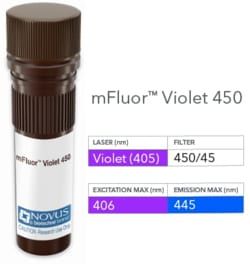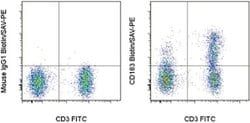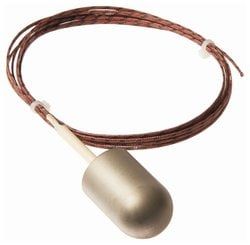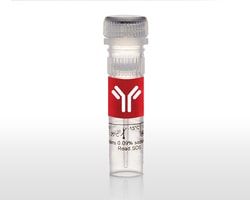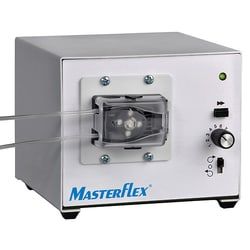CD183 (CXCR3) Monoclonal Antibody (CEW33D), Biotin, eBioscience™, Invitrogen™
Manufacturer: Invitrogen
Select a Size
| Pack Size | SKU | Availability | Price |
|---|---|---|---|
| Each of 1 | 13-183-982-Each-of-1 | In Stock | ₹ 17,088.00 |
13-183-982 - Each of 1
In Stock
Quantity
1
Base Price: ₹ 17,088.00
GST (18%): ₹ 3,075.84
Total Price: ₹ 20,163.84
Antigen
CD183 (CXCR3)
Classification
Monoclonal
Concentration
0.5 mg/mL
Formulation
PBS with 0.09% sodium azide; pH 7.2
Gene Accession No.
P49682
Gene Symbols
CXCR3
Purification Method
Affinity chromatography
Regulatory Status
RUO
Gene ID (Entrez)
2833
Content And Storage
4° C, store in dark, DO NOT FREEZE!
Form
Liquid
Applications
Flow Cytometry
Clone
CEW33D
Conjugate
Biotin
Gene
CXCR3
Gene Alias
an; C Cmotif chemokine; C X C motif chemokine; CC motif chemokine; CCmotif chemokine; CD182; CD183; chemokine (C-X-C motif) receptor 3; chemokine receptor 3; CKR-L2; Cmkar3; CXC; C-X-C chemokine receptor type 3; CXC motif chemokine; C-X-C motif chemokine receptor 3; Cxcr3; CXC-R3; CXCR-3; G protein-coupled receptor 9; GPR9; Interferon-inducible protein 10 receptor; IP10; IP10 receptor; IP-10 receptor; IP10-R; Mig receptor; MigR; Mig-R
Host Species
Mouse
Quantity
100 μg
Primary or Secondary
Primary
Target Species
Human
Product Type
Antibody
Isotype
IgG1 κ
Related Products
Description
- Description: The CEW33D monoclonal antibody reacts with human CD183
- CD183, also known as CXCR3, is a G protein-coupled chemokine receptor that interacts with ligands CXCL9 (MIG), CXCL10 (IP-10), and CXCL11 (I-TAC)
- Strongly associated with type 1 immunity, CD183 is induced in naive T cells upon activation and remains upregulated in T helper type (Th)1 cells, CD8 effector cells, NK cells and NKT cells
- CD183-ligand interactions mediate infiltration of inflamed tissues in normal type 1 immune responses as well as in many inflammatory and autoimmune diseases
- CD183 is also expressed on some B cells and plasmacytoid DC
- Applications Reported: This CEW33D antibody has been reported for use in flow cytometric analysis
- Applications Tested: This CEW33D antibody has been tested by flow cytometric analysis of normal human peripheral blood cells
- This can be used at less than or equal to 0.5 μg per test
- A test is defined as the amount (μg) of antibody that will stain a cell sample in a final volume of 100 μL
- Cell number should be determined empirically but can range from 10^5 to 10^8 cells/test
- It is recommended that the antibody be carefully titrated for optimal performance in the assay of interest
- Filtration: 0.2 μm post-manufacturing filtered
- This gene encodes a G protein-coupled receptor with selectivity for three chemokines, termed IP10 (interferon-g-inducible 10 kDa protein), Mig (monokine induced by interferon-g) and I-TAC (interferon-inducible T cell a-chemoattractant)
- IP10, Mig and I-TAC belong to the structural subfamily of CXC chemokines, in which a single amino acid residue separates the first two of four highly conserved Cys residues
- Binding of chemokines to this protein induces cellular responses that are involved in leukocyte traffic, most notably integrin activation, cytoskeletal changes and chemotactic migration
- Inhibition by Bordetella pertussis toxin suggests that heterotrimeric G protein of the Gi-subclass couple to this protein
- Signal transduction has not been further analyzed but may include the same enzymes that were identified in the signaling cascade induced by other chemokine receptors
- As a consequence of chemokine-induced cellular desensitization (phosphorylation-dependent receptor internalization), cellular responses are typically rapid and short in duration
- Cellular responsiveness is restored after dephosphorylation of intracellular receptors and subsequent recycling to the cell surface
- This gene is prominently expressed in in vitro cultured effector/memory T cells, and in T cells present in many types of inflamed tissues
- In addition, IP10, Mig and I-TAC are commonly produced by local cells in inflammatory lesion, suggesting that this gene and its chemokines participate in the recruitment of inflammatory cells
- Therefore, this protein is a target for the development of small molecular weight antagonists, which may be used in the treatment of diverse inflammatory diseases
- Multiple transcript variants encoding different isoforms have been found for this gene.
